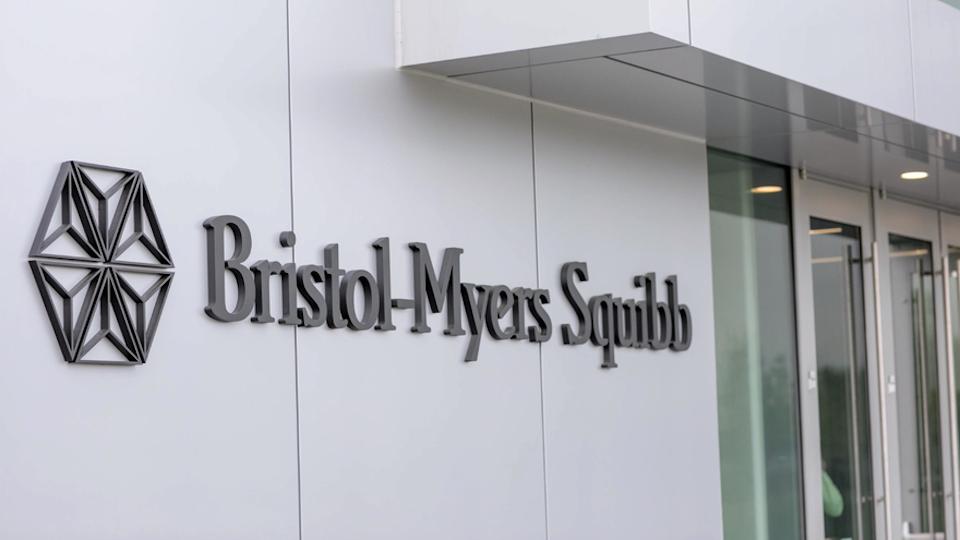BMS gets FDA nod for ozanimod, but launch will be delayed

Bristol-Myers Squibb’s multiple sclerosis therapy ozanimod has been approved by the FDA right on schedule, but the company has put the launch on ice while it waits for the coronavirus pandemic to abate.
The FDA green light is for adults with relapsing forms of MS, including relapsing-remitting MS (RRMS), active secondary progressive MS (SPMS) – a more advanced stage that affects patients who initially present with RRMS – and clinically isolated syndrome (CIS).
The oral S1P1 and S1P5 receptor agonist drug – now given the trade name Zeposia – was billed as one of the top 2020 drug launches to watch by Clarivate last month, before the COVID-19 outbreak started to accelerate.
It was developed by Celgene ahead of its takeover by BMS, and was on track to be a $1.6 billion product by 2024 despite entering an increasingly competitive MS market, according to Clarivate.
That prediction could now be off target, as BMS has said it will delay commercialisation of Zeposia “based on what’s in the best health interest of our patients, customers and employees.”
The company added that it "will continue to monitor the environment and will partner with the neurology community to inform launch timing."
When it does launch, Zeposia will compete most closely with Novartis’ first-to-market S1P therapy Gilenya (fingolimod) – which made $3.2 billion in 2019 sales – and the Swiss drugmaker’s follow-up Mayzent (siponimod) which was approved in the US last year.
Celgene had been hoping to beat Mayzent to market with ozanimod, but suffered a setback after the FDA issued a refusal-to-file letter for the company’s first marketing application in 2018, prompted by data deficiencies in its dossier. The fresh delay means Novartis has a longer window of opportunity to establish Mayzent with MS-treating physicians.
Zeposia is the first in the S1P class to allow people with relapsing MS to start treatment without requiring a genetic test or a first-dose observation period, which could help it differentiate from its rivals in the market.
BMS also says it has a better safety profile than Gilenya, which is linked to side effects including a slowing of the heart rate and a greater risk of infections that have been attributed to activity at other S1P receptor subtypes.
The company has said it thinks Zeposia could become a $5 billion product at peak, if it can expand its use into other indications such as inflammatory bowel disease.
Those plans could also be under threat however, as BMS has said it will delay clinical trials due to the COVID-19 pandemic, calling a halt to the activation of new clinical trial sites although existing sites can continue to recruit new patients. Late-stage ozanimod trials are ongoing in ulcerative colitis and Crohn’s disease.
Zeposia has been approved by the FDA on the strength of the phase 3 RADIANCE and SUNBEAM trials, which showed it was significantly more effective than Biogen‘s injectable drug Avonex (interferon beta-1a), an established first-line MS treatment.
It’s also under review by the EMA with a verdict expected sometime in the first half of 2020. There’s no news yet on its US list price.
Along with other S1P drugs, it will also have to compete with Merck KGaA’s Mavenclad (cladribine), which has a difference mechanism of action but was cleared for the same indications by the FDA almost a year ago. Mavenclad has been available in other markets for a while, but sales more than tripled to €321 million ($354 million) last year after the US approval.
Another new rival is Biogen’s recently-approved Vumerity (diroximel fumarate), a follow-up to the company’s Tecfidera (dimethyl fumarate) which made $4 billion last year and is the top-selling oral therapy for MS – but could potentially lose patent protection as early as this year.
Generic dimethyl fumarate could end up being a drag on sales for all the oral MS drugs, including Zeposia. Meanwhile, a new generation of drugs such as Roche’s fast-growing Ocrevus (ocrelizumab) infusion – which had sales of around $3.7 billion last year – won’t be shifted without a fight.
The FDA approval of Zeposia is also a boost to Celgene stockholders, as it is one of three drugs tied to the payment of a contingent value right (CVR) linked to the $74 billion takeover by BMS.
The others are two CAR-T therapies, lisocabtagene maraleucel for B cell lymphomas set for a ruling from the FDA in August, and idecabtagene vicleucel for myeloma which is due to be filed in the US in the first of half of this year.
BMS said the trials for these cell therapies are fully enrolled, so won’t be affected by the clinical trial hiatus.












